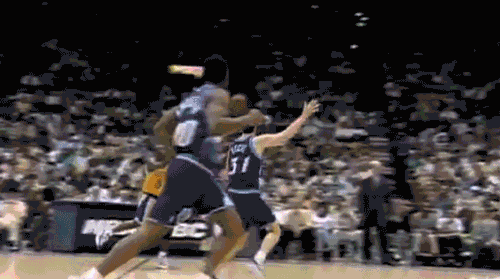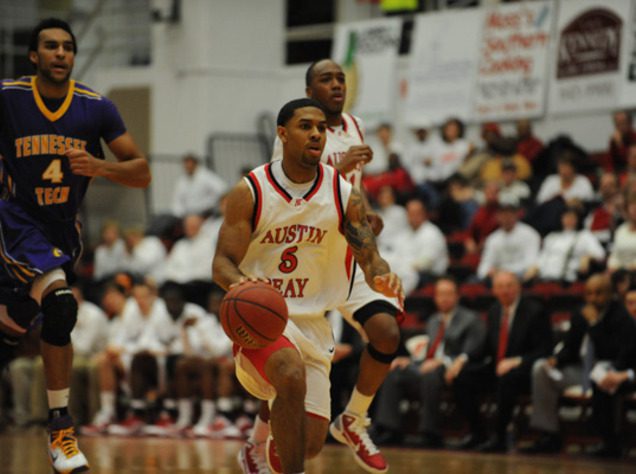Running The Fast Break
Basketball coaches differ on the style of offense they like to run, but more and more teams from elementary school all the way up to the professional level are running an efficient and productive strategy centered around the fast break offense. Even if it’s not your primary type of offense, it’s wise to know how to properly run an up-tempo style. Again, it’s all about the team’s certain fits, needs, and personnel, but teams must be able to constantly take advantage of any potential situation they’ve given. So, if even if you like slow, methodical plays, it would be a serious flaw if you didn’t have the ability to race up-court if the numbers and scenario called for it.
With that being said, the fast break can help a team capitalize on sloppy mistakes, slow transition defense, and sharp, intelligent thinking. If you want to take your game to another level, you need to check out CoachUp’s list of benefits and key traits behind running the a fast break.

Under Pressure
Pushing the ball up the floor quickly puts pressure on the defense, and will cause them to not crash the boards as they will be working to get back to limit lay-ups. Check out the gif above, the frantic, scrambling defense hardly has time to get into position before the alley-oop is flying over their heads. The more pressure you can put on opposing defenses, the better.
Like most things in life, things are a bit easier when you’ve got time to plan and think it out. Pushing the ball will allow you team to take full advantage of situations like the one above.
Team Tempo
The opportunity for easy and open shots, especially if your team struggles in the half-court, is a huge benefit from the fast break. An aggressive team attitude on offense will often carry over to your defense and rebounding. Keeping everyone moving on both sides of the floor pays so many dividends.
Disrupts The Defense
The fast break will often break the opponent’s press defense because if you quickly get the ball in-bounds off a make, they won’t be able to set up properly. On misses and steals, the defense will be more concerned about not giving up an easy shot than they will about setting up their press.
Tires Out The Competition
Your team must be in good shape because this style of play will cause players to get tired quickly, especially if you also run an aggressive defense. If the other team lacks depth or is not in good shape, you’ll run them out of the gym late in games — which can be all the difference between a three-point loss and a nine-point win.
Builds Team Trust
The fast break is a particularly smooth team building activity as well, as it encourages players to hustle, help their teammates, and get in good positions to score. Sometimes, offenses can stagnate while watching their best guards go to work with the ball, but on a fast break, any player is in the mix. It teaches the very important idea that if you work hard enough, you will get the ball in situations to succeed. Then, all of a sudden, everybody will working harder than ever.
Prepare In Practice
When you’re contributing to a fast break offense, the key is to limit turnovers — play fast, but not out of control. If your team is passing the ball out of bounds, can’t control their dribble, or are just turning the ball over without getting good shots, you’re playing too fast.
The more you practice playing fast, the quicker things will slow down – which may sound backwards but it’s true. Once the team understands when to push the ball and when to slow it down, which depends some on your style of play, then your offense will truly dictate how the game is played for both teams. Don’t force bad passes, be sure to not over dribble, and get the ball up the floor quickly with good spacing and passing. If a layup or open jumper isn’t there, know when to set up your half-court sets. Again, repetition that leads to confidence is the most vital part.

The Outlet
Focus of fundamentals is a continual process and not something that is only taught to younger players. This includes properly passing the ball to an ‘outlet,’ thus starting the fast break. Have your post players routinely practice – again, repetition – pulling down rebounds and pivoting to the outside to look for a guard. Additionally, work with your guards so that they now that the outlet is outside the three-point line — this is the best place to get open and quickly start the transition from defense to offense.
Once the ball is at the outlet position, have another guard or strong ball handler get to the top of the three-point line looking for a pass to get the ball into the center of the floor. If that pass is not available, the outlet player should take their first dribble towards the middle and not to the sideline where they can get trapped. It’s very important to get the ball to the middle of the floor in order to increase your fast-break options. Now you’ll have the right and left side of the floor as opposed to just one side.
After A Made Basket
If you’re running the break off an opponent’s made basket, the same rules would apply – get the ball in quickly, move the ball with passes if you can, and get it up the middle of the floor as soon as you can. In order to best attack the defense, don’t let the ball touch the floor on the made basket – whoever can grab it and get it in-bounds should do so. Waiting for a specific person to pass the ball in only allows the defense more time to get set.
Running The Lane
There are different ways of running the transition offense, but most methods use the idea of filling three lanes coming up the floor: the ball carrier, a trailing player, and a prevent person. The guards and small forward should run the three lanes. One lane is straight up the middle of the floor and the other lanes are along each sideline. It often doesn’t matter which position is in which lane, just fill each as quickly as possible and go! Other coaches dictate that the outlet pass goes to the point guard in the center lane, with the outside lanes being assigned to individual players, so each athlete knows his role — but figure out what works best for you!
Preferably, the ball will be in the center lane in order to give options on both sides of the basket. Although the break can be run from the wing, it’s not the most efficient way to an easy bucket. The center person should dribble the ball all the way to the free throw lane, and should not make any unnecessary passes prior to that point. The first option to score would be for the ball handler to take the ball to the basket. The two outside lanes should cut to the basket at the free throw line extended looking for a pass. If the initial layup or pass to the cutter are not available, the ball handler should shoot the free throw jumper and the wings will crash the boards for the rebound.
The trailing player should wait to make the perfect cut, just as the rest of the defense is too preoccupied with everything else. And, hopefully, his movement should leads to an easy two points. The aforementioned prevent player is simply there as a free safety for the offensive team, just in case there’s a turnover. If there’s nothing there, don’t worry about it — the fast break won’t work every time, just set up your half-court offense and get to work.
Example
In the fast break offense, there are no sets or mandatory passes, so players know that if they hustle, they could be putting themselves in the perfect position for a thunderous dunk, or game-winning lay-up. Take a look at the video above, what do you see? After the long rebound, Orlando elects not to use their final timeout as they realize that Victor Oladipo in the open court is an absolute benefit.
Oladipo takes off and, realizing that there will be no timeout, Maurice Harkless and Tobias Harris begin to follow for a rebound or potential pass. Three of Oklahoma City’s defenders get caught standing still near half-court, leaving Jeremy Lamb to play three-on-one defense. In another world, Oladipo could’ve taken it to the rim himself, but opts to make a nice, but simple pass to Harkless. At this point, Harkless has a pretty high percentage shot near the rim, but Lamb is still scrambling to contest the shot, so he passes it again. This time, Harris, who has filled the lane perfectly, crashes towards the hoop and dunks over Lamb, who can’t switch assignments for the third time quick enough, for the game-winning basket.
It seems crazy, but this is one of the best fast breaks in recent memory as it perfectly highlights the team unity, benefits, and disruption a well-executed possession can do. More often than not, you might expect all of Orlando to stand around and watch Oladipo go to work alone and hope for the best. However, once Harris and Harkless get involved, they create an open shot that eventually wins them the entire game. Does it get better than that?
(Related: Read about becoming a better ball handler here.)
Huddle Up
At the end of the day, the fast break offense isn’t for everyone, and some might feel a little uncomfortable doing it too often. But, any basketball player will benefit from knowing the situations in which such an offense would benefit from pushing after gaining possession. The more you practice these things, the more you’ll be ready for the real thing in a game, so take some risks during practice, it could pay off in the long run!
If you’re still struggling with your fast break game, consider booking one of CoachUp’s private trainers to help you out. Whether it’s reading the defense in front of you, learning when to push up or slow down, or just understanding the lane-filling concepts a little bit more, our team’s vast knowledge and expertise will set you straight. What are you waiting for?
How useful was this post?
Click on a star to rate it!
Average rating 0 / 5. Vote count: 0
No votes so far! Be the first to rate this post.


